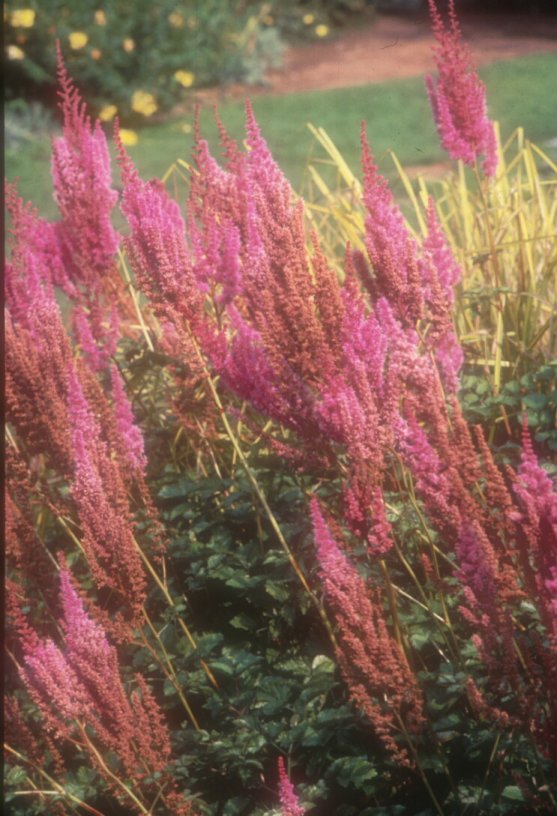| Botanical Name: Astilbe chinensis v. taquettii 'Superba' | |
| Common Name: Superba Chinese Astilbe |

-
Anatomy
-
Culture
-
Design
Plant Type
Perennial
Height Range
3-6'
Flower Color
Pink, Purple
Flower Season
Summer
Leaf Color
Green, Dark Green
Bark Color
n/a
Fruit Color
n/a
Fruit Season
n/a
Sun
Half, Shade
Water
High
Growth Rate
Moderate
Soil Type
Loam
Soil Condition
Rich, Well-drained, Moist
Soil pH
Neutral
Adverse Factors
n/a
Design Styles
English Cottage, Japanese, Woodland
Accenting Features
Showy Flowers
Seasonal Interest
Summer
Location Uses
Entry, Perennial Border, Shrub Border, Foundation, Patio, Walls / Fences
Special Uses
Container, Cut Flowers
Attracts Wildlife
n/a
Information by: Stephanie Duer
Photographer: Tina Olsen Binegar
Photographer: Tina Olsen Binegar
-
Description
-
Notes
'Superba' is a bold, very tall astilbe with dark green, compound, fern-like foliage that grows in mounds to 24 inches tall and wide. Large, dense panicles of rose-purple flowers on hairy stems rise to 4 or more feet ttall in early to mid-summer. Not a low-water plant, but it is typically over-watered, and so could fit into a shady border that is watered weekly during the hottest portion of the summer.
Grow in average to loamy, medium, well-drained soils in part shade to full shade. Prefers moist, humusy, organically rich soils. If regularly watered, foliage will usually remain attractive throughout the growing season. Mulch helps retain soil moisture. Chinese astilbes are generally noted, however, for having better sun and drought tolerance than other species of astilbe. Removing faded flower stalks will not prolong bloom but may improve plant appearance, particularly if a ground cover look is desired. On the other hand, many gardeners leave the flower stalks in place after bloom because of the continuing ornamental interest of the dried seed heads. Divide clumps when overcrowding occurs (every 3-4 years). Not a low-water plant, but one of those that is habitually over-watered.